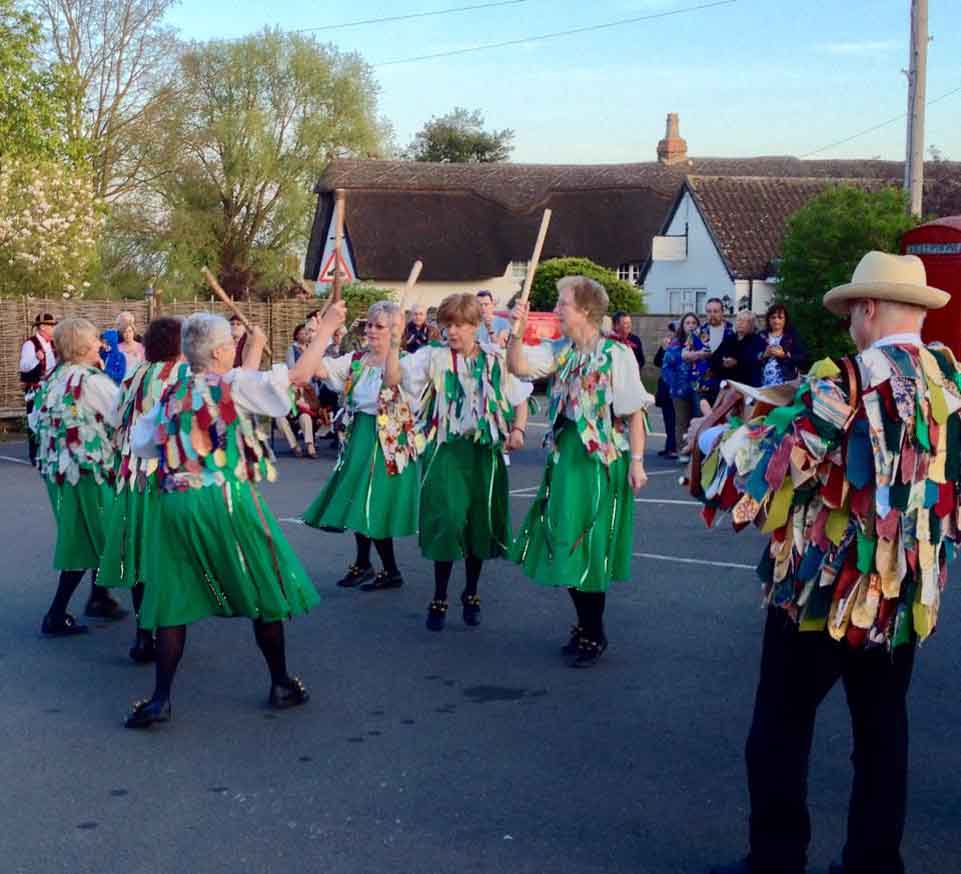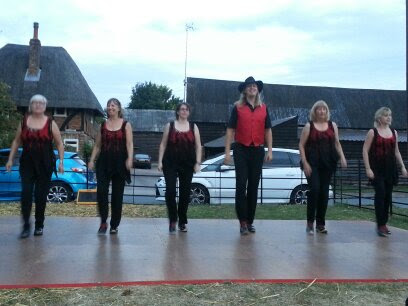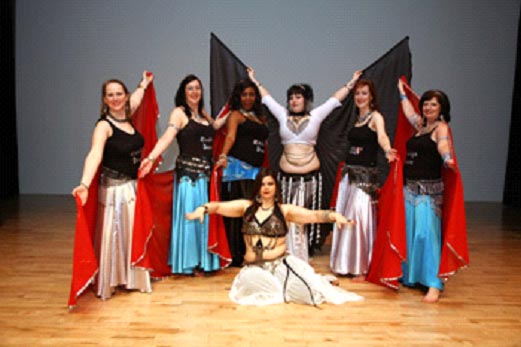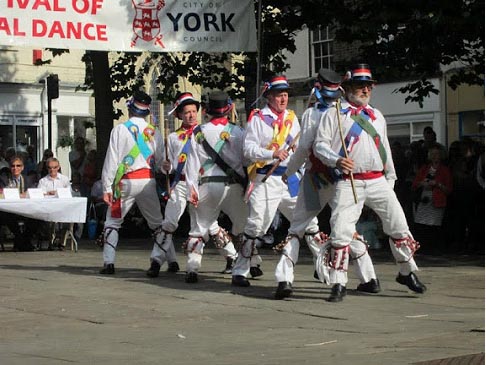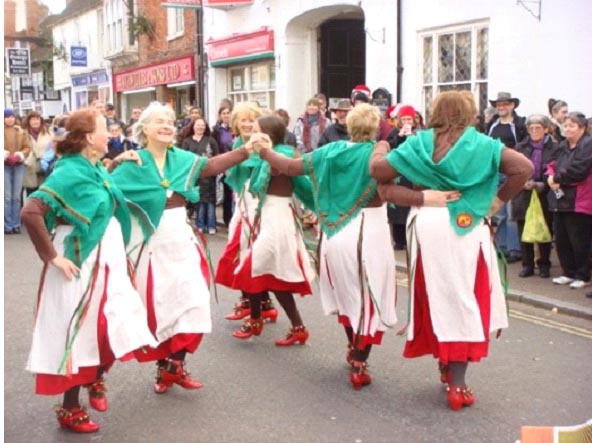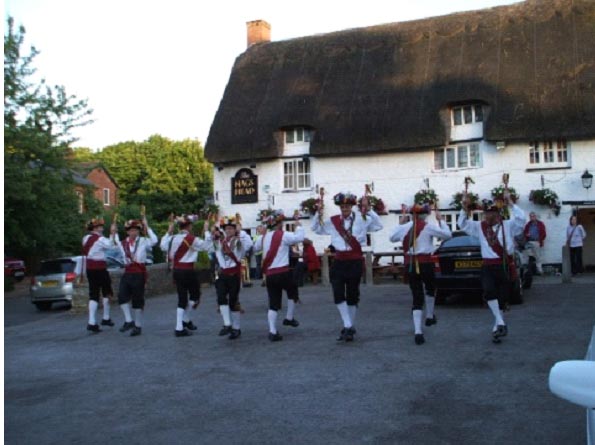
Formed in 1978 and based in Stoke Bruerne between Milton Keynes and Northampton, Rose & Castle Morris is a mixed North West Morris side. Almost all of their dances are traditional and come from the cities and towns of the North West of England. A significant feature of this side is that they dance in traditional English clogs with “irons” fitted to their soles that make a distinctive sound.
They are always looking for new recruits and will be holding a workshop from 10.30am to 12 noon in Stony Stratford on the morning after the Switching On of the Lights (30th November)
For further information, see their web site:
www.rose-castlemorris.org.uk
Queen’s Oak is a women’s morris side from Potterspury
in Northamptonshire, a village adjacent to Watling Street just north of
Milton Keynes. The name originates from the ancient tree growing in the
fields to the north of Potterspury associated in local legend with
Elizabeth Woodville, Queen of the Yorkist King Edward IV. Formed over 33
years ago, the side performs a mixture of traditional dances from
Herefordshire, Worcestershire and Shropshire - the Welsh border counties
- along with modern dances written in the same spirit.
The current side has fifteen-plus members from the ages of 15 to 60+.
